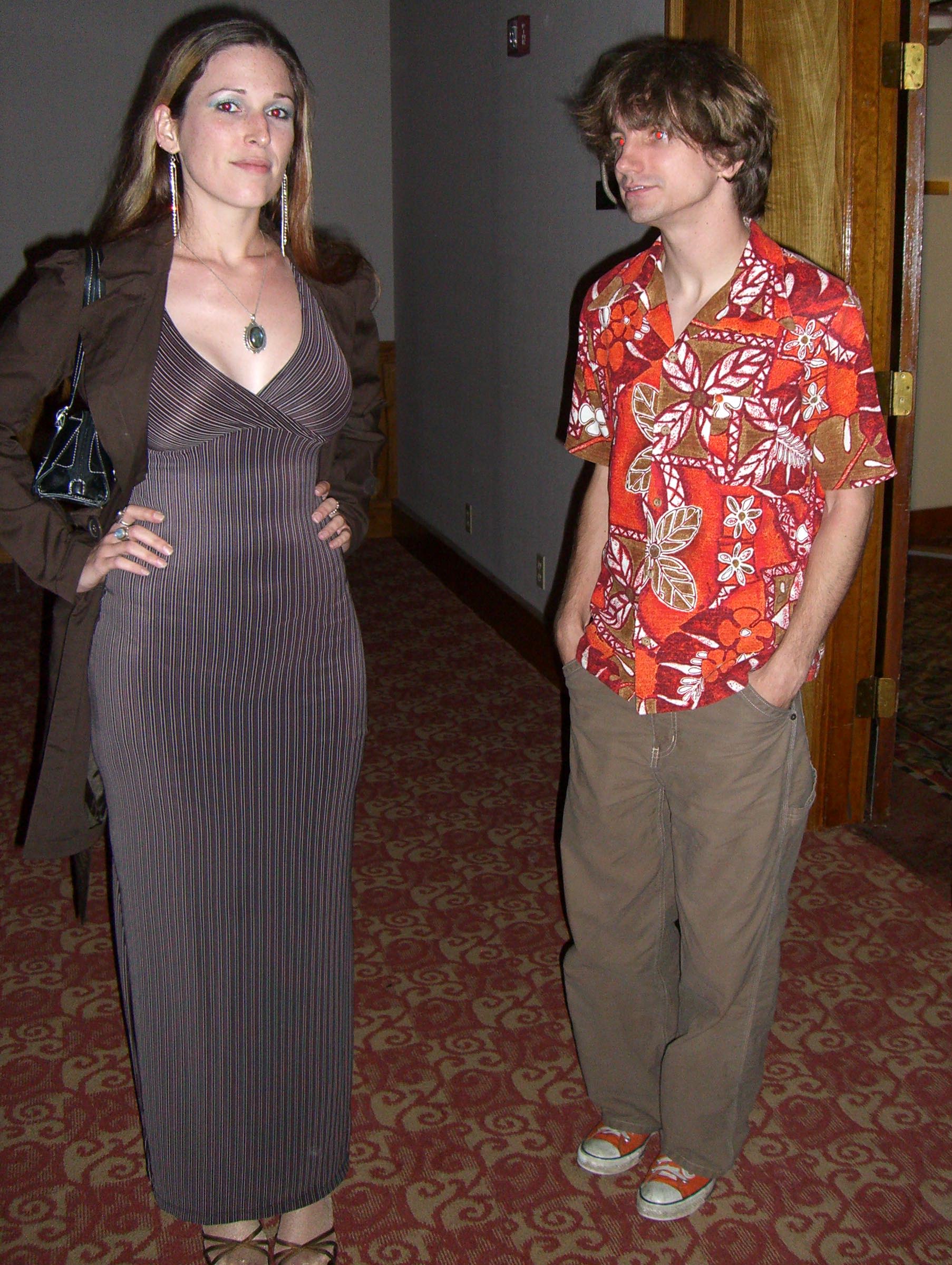LoneStaRG 9, September 2007
On Labor Day weekend I went to LoneStaRG, a Mensa regional gathering. I spent half a day there (out of 4 possible total). That was about the right amount of time. There were very few costumes at that year’s LoneStaRG, and overall it just wasn’t as lively as the year before. But our air conditioning at home had gone out that weekend, and LoneStaRG seemed as good a place as any to go to recover from the heat.
Stories too good to be true
One of the lectures there might have had to do with creative thinking. The speaker told the story about a guy who figured out a unique way to bring his shoes into a foreign country. You see, he found it impossible to buy shoes in his size (13) in that country. No stores had them. He brought some footwear from the US, but when it wore out, he was left in a quandary. He could ask his friends in the US to send him shoes, but then he would have to pay exorbitant tarifs imposed on foreign goods. So he asked friends to mail him two separate packages containing a single shoe each. His host country’s customs officers didn’t know what to make of a package containing a single shoe, so they let him have it without imposing a tariff. Whether that’s believable or not, I can’t tell. It sounds a bit too much like one of those apocryphal tales of out-of-the-box thinking, that management books are rife with.
Don Baker’s talk on Universal Darwinism
One of the more interesting things at the LoneStaRG was Don Baker’s presentation “Universal Darwinism: How Computer Science has Validated the Theory of Evolution”. It can be summed up in a few sentences as follows. Computer simulations can help to study evolution, which is hard to study otherwise, because it occurs very slowly in nature. The benefit flows both ways: the principles of evolution applied to computer science have lead to creation of a class of algorithms called genetic algorithms. I had already heard or read most of the points mentioned in his talk (as is more and more often the case with public science lectures I go to. Is that a downside of ed-joo-ma-cating myself, or what?) But it was neat to see them summed up all in one place. The most interesting part of the talk were examples of designs that genetic algorithms have come up with, such as a hemispherical coverage antenna, or a load-bearing truss.
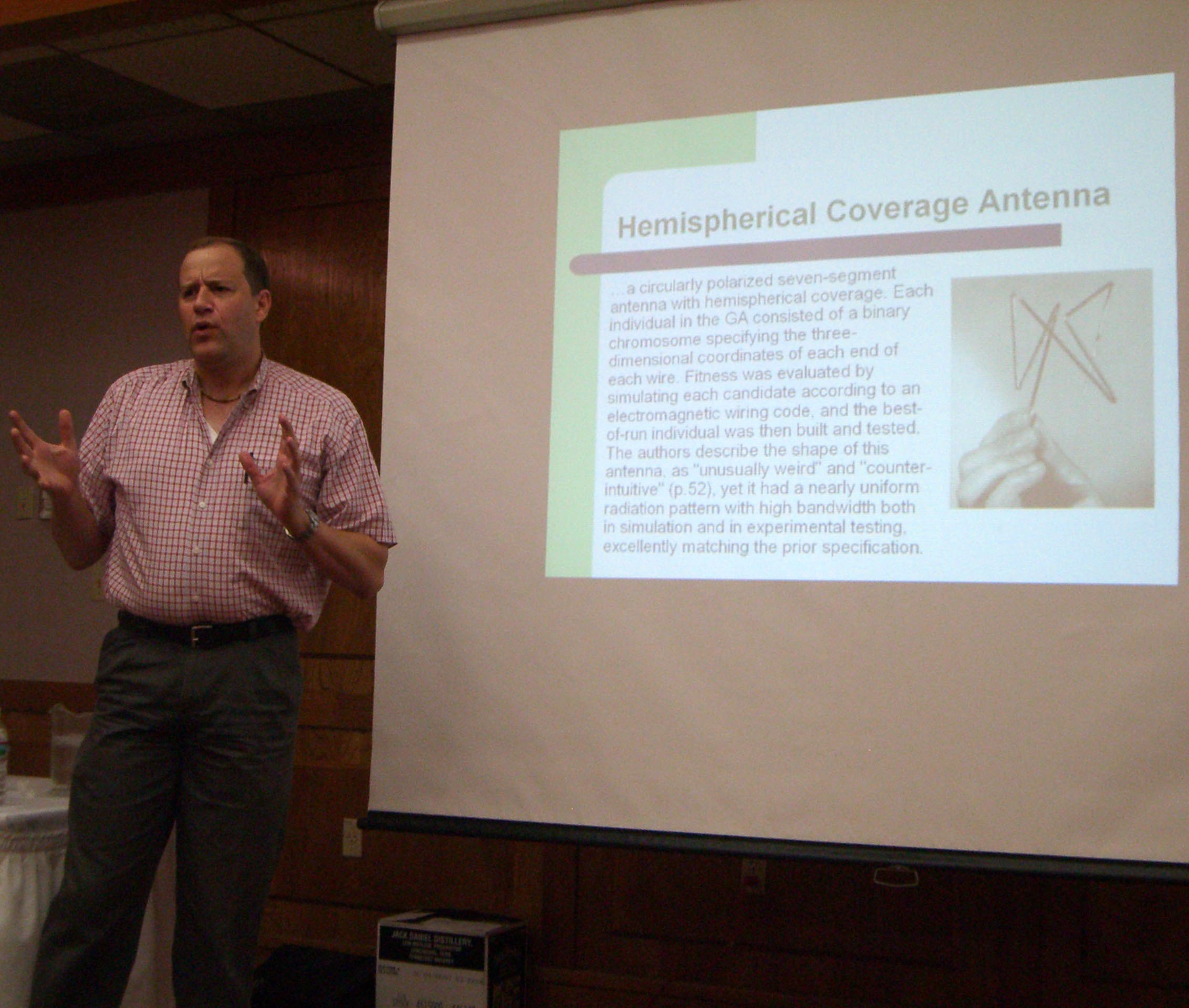
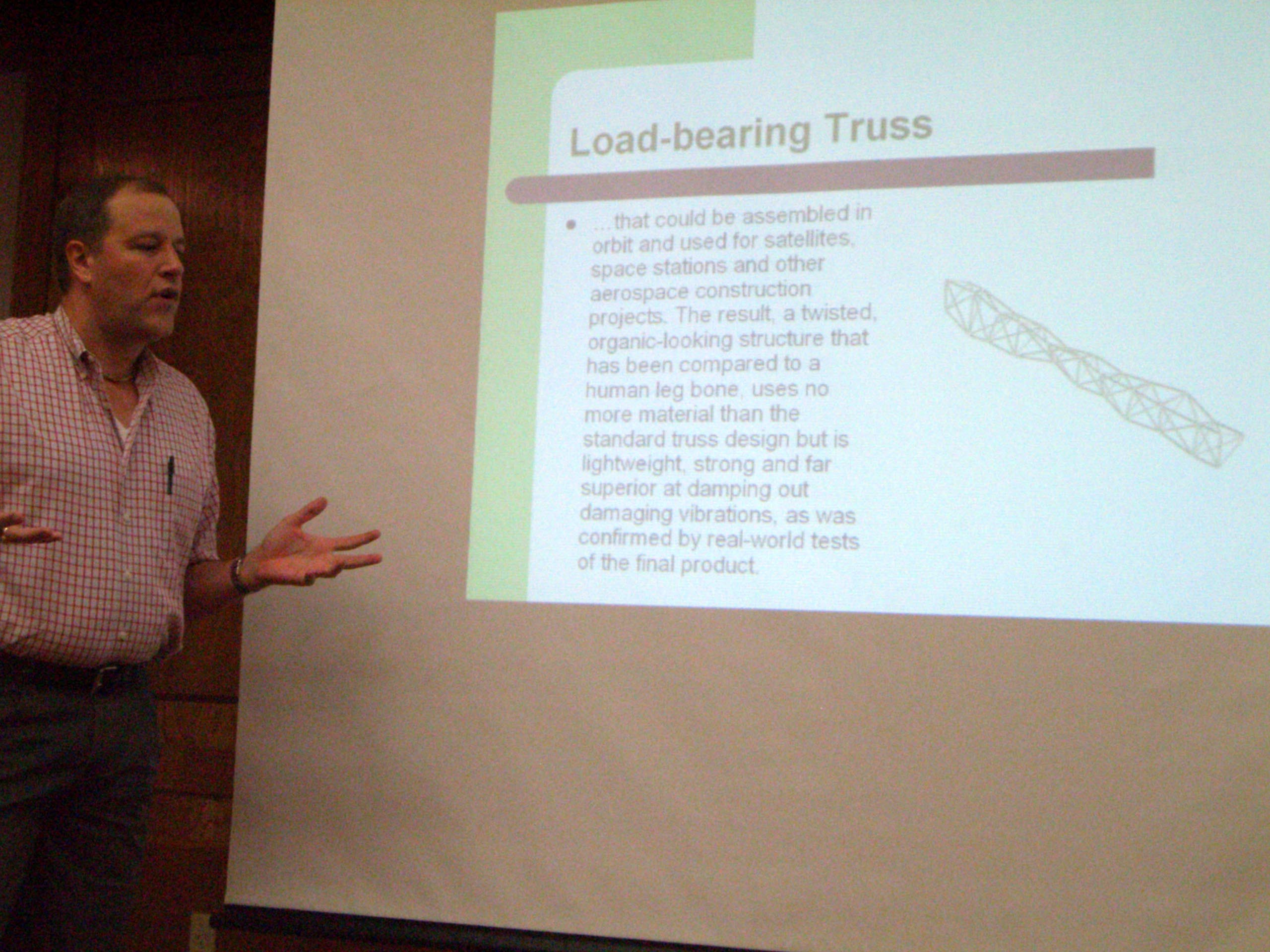
As Don noted, some of those designs seem really non-intuitive; they don’t look like anything a human designer could have come up with, but their superiority was confirmed in real-world tests.
Then there was a dance, and some people did dress up in costumes, like Friar Don here (with Patty)
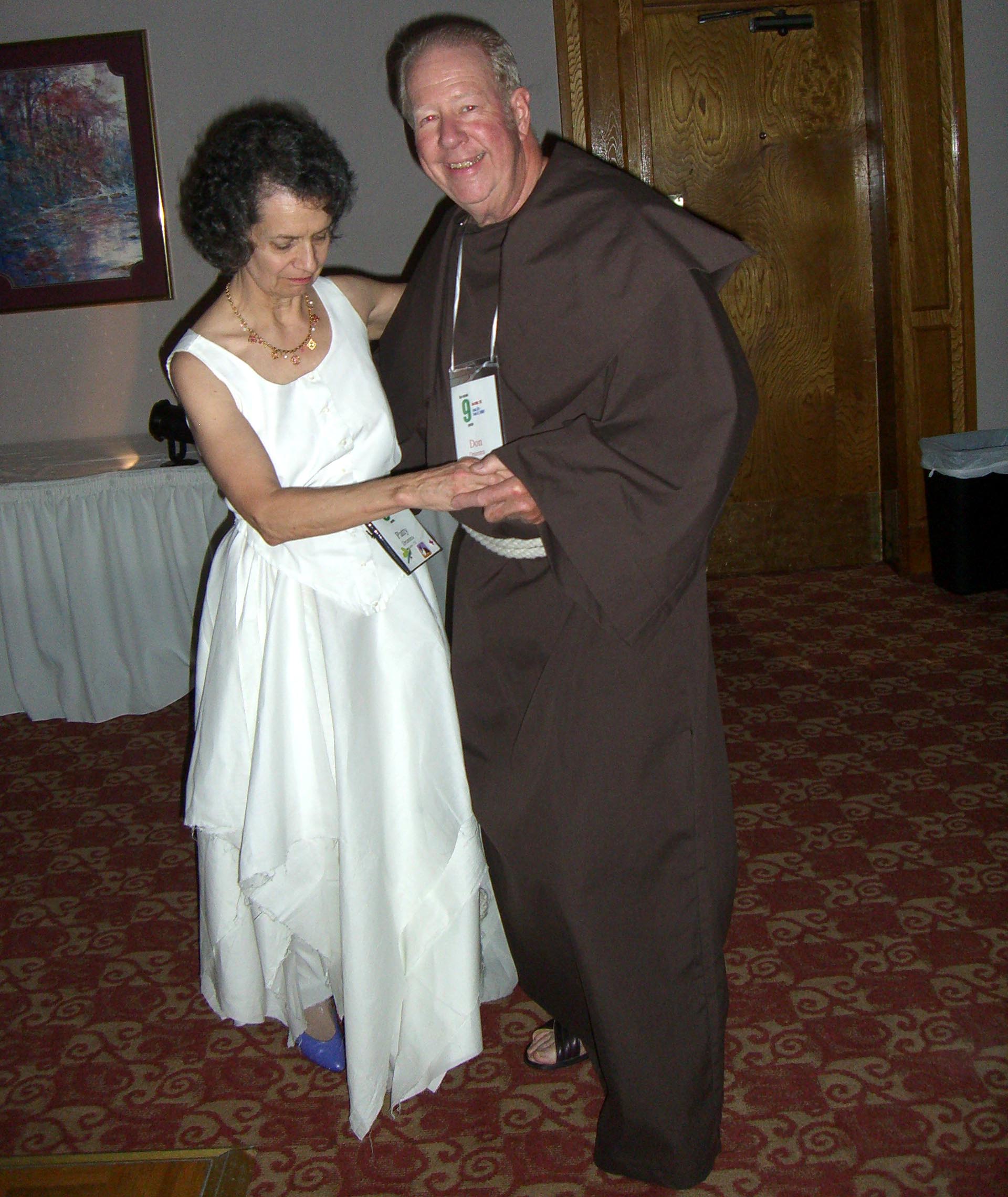
Here a red-eyed zombie — me — is sitting with them at the table.
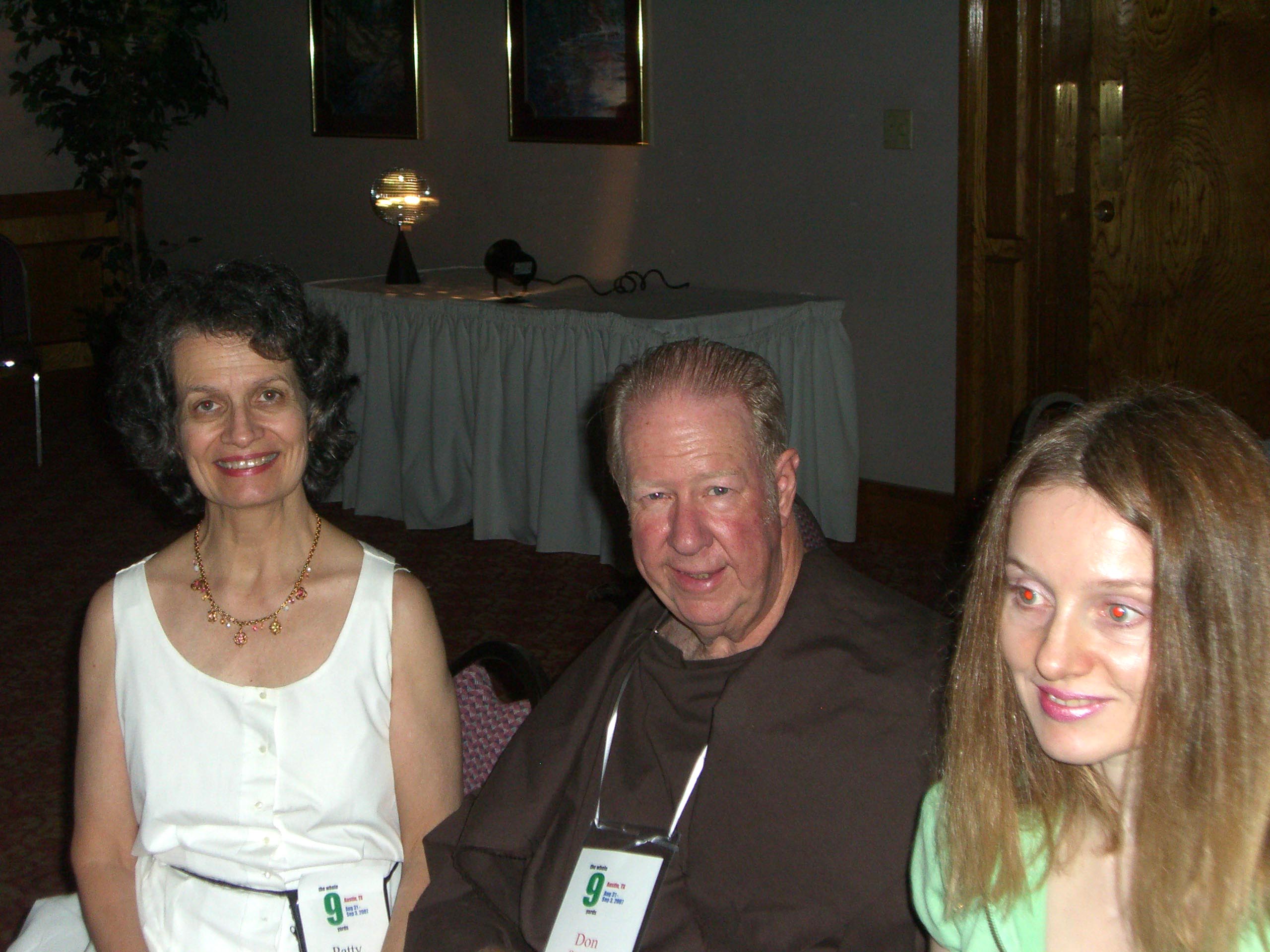
A visitor from Houston (left) and her guest
